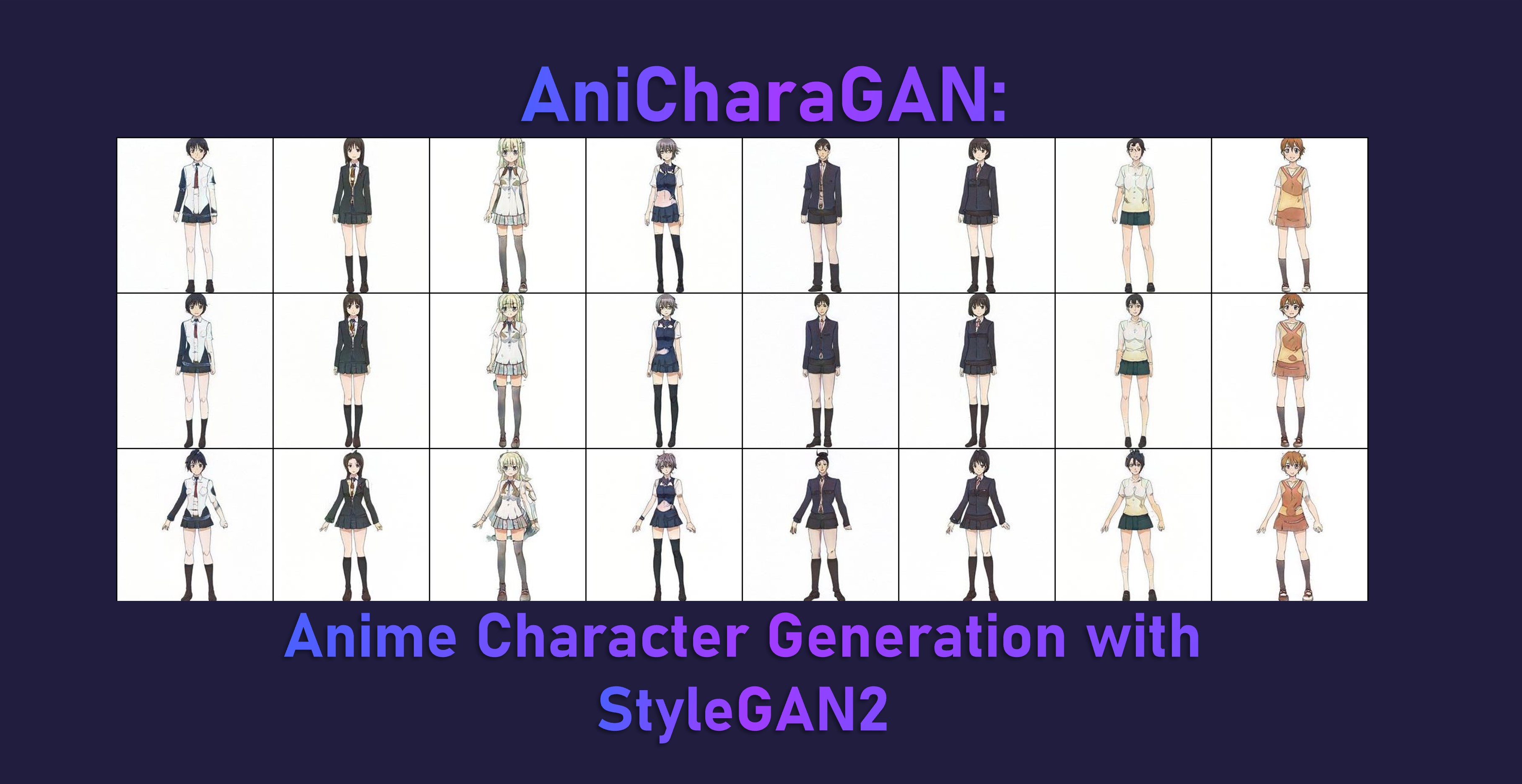tl;dr A step-by-step tutorial to automatically generate anime characters (full-body) using a StyleGAN2 model.
Practical Machine Learning - Learn Step-by-Step to Train a Model
A great way to learn is by going step-by-step through the process of training and evaluating the model.
Hit the Open in Colab button below to launch a Jupyter Notebook in the cloud with a step-by-step walkthrough.
Continue on if you prefer reading the code here.
Anime Character Generation with StyleGAN2
Notebook to generate anime characters using a pre-trained StyleGAN2 model.
We utilise the awesome lucidrains’s stylegan2-pytorch library with our pre-trained model to generate 128x128 female anime characters.
The notebook is structured as follows:
- Setting up the Environment
- Using the Models (Running Inference)
Setting up the Environment
Ensure we have a GPU runtime
If you’re running this notebook in Google Colab, select Runtime > Change Runtime Type from the menubar. Ensure that GPU is selected as the Hardware accelerator. This will allow us to use the GPU to train the model subsequently.
The library requires that you have access to a GPU.
Setup Dependencies
We need to setup the stylegan2_pytorch library so lets install it.
!pip install -q stylegan2_pytorch==1.5.10
Using the Model (Running Inference)
First we download the checkpoint weights from the pre-trained model which is stored on the superb huggingface model hub.
We make use of the torch.hub.download_url_to_file function to download the model weights stored in a .pt file to a folder stucture we have created.
import torch
from pathlib import Path
Path('/content/models/ani-chara-gan/').mkdir(parents=True, exist_ok=True)
torch.hub.download_url_to_file('https://huggingface.co/eugenesiow/ani-chara-gan/resolve/main/model.pt',
'/content/models/ani-chara-gan/model_150.pt')
torch.hub.download_url_to_file('https://huggingface.co/eugenesiow/ani-chara-gan/resolve/main/.config.json',
'/content/models/ani-chara-gan/.config.json')
Next we run inference to generate our image from the Anime Character GAN.
Specifically we are running the following steps:
- Load the model using lucidrain’s library and the
ModelLoaderconvenience function. The model is loaded from the directory we have downloaded the pre-trained model to/content/models/ani-chara-gan/. - Randomly initialise with some
noise. - Use the convenience function
noise_to_styles. This basically passes the noise vector through the network to get the style vector. At the backend, this callsmodel.GAN.SE(noise). - Use the convenience function
styles_to_imagesto call the generator on the style vector. At the backend, this roughly callsmodel.GAN.GE(styles). - Save the output vector to an image with
save_image. - Display the saved image with
cv2_imshow.
import torch
import cv2
from google.colab.patches import cv2_imshow
from torchvision.utils import save_image
from stylegan2_pytorch import ModelLoader
loader = ModelLoader(
base_dir = '/content/', name = 'ani-chara-gan'
)
noise = torch.randn(1, 256).cuda() # noise
styles = loader.noise_to_styles(noise, trunc_psi = 0.7) # pass through mapping network
images = loader.styles_to_images(styles) # call the generator on intermediate style vectors
save_image(images, './sample.jpg')
cv2_imshow(cv2.imread('./sample.jpg'))

We can connect to Google Drive with the following code. You can also click the Files icon on the left panel and click Mount Drive to mount your Google Drive.
The root of your Google Drive will be mounted to /content/drive/My Drive/. If you have problems mounting the drive, you can check out this tutorial.
from google.colab import drive
drive.mount('/content/drive/')
You can move the output files which are saved in the /content/ directory to the root of your Google Drive.
import shutil
shutil.move('/content/sample.jpg', '/content/drive/My Drive/sample.jpg')
More Such Notebooks
Visit or star the eugenesiow/practical-ml repository on Github for more such notebooks:
Alternatives to Colab
Here are some alternatives to Google Colab to train models or run Jupyter Notebooks in the cloud:
